Polypodium
Plants of this genus should by rights be at the forefront of popularity for garden ferns. They are evergreen or wintergreen, with tough leathery usually pinnatifid fronds. Hardy and accommodating, able to grow almost anywhere, modest in size and spread, yet not small. The only drawback is that they tend to be late-season plants, which often do not start into new growth before July, and gardeners may feel that it is a poor bargain that a plant which is green and lush in February looks brown and dead in May and June. This can be helped by clipping back in spring, or even better by pulling out the brown fronds as the new ones begin to emerge, they come away with a satisfying pop. The spread is relatively slow and they are easy to lift, however as solid ground cover plants for difficult, and especially dry, places, where little else will grow they can not be bettered. The taxonomy of Polypodium can be confusing, but all make good garden plants. There are three main species native to Britain P. cambricum, (Syn. P. australe,) P. interjectum and P. vulgar, they do however cross breed, so there are many intermediates making them difficult to distinguish which means that several subspecies can appear in trade often just named P. vulgar.
|
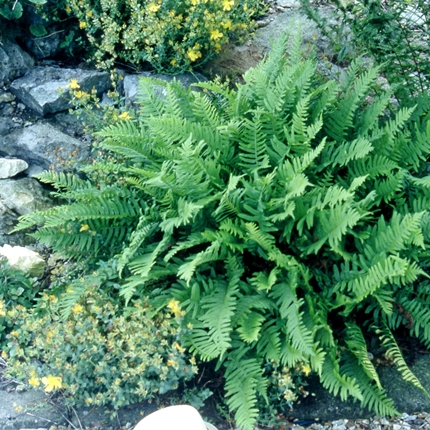
|
P. cambricum (E) (syn. P. australe) southern polypody. Hight 40 cm. Spreading habit.
A good, low-spreading British native fern for the garden, with very broad almost wider than long leathery, pinnatifid fronds. It likes a lime soil, and makes a good plant for the front of the border. There are several good cultivars, including those in the ‘Cambricum’ group which have very ornate crispy and cut leaved fronds.
30cm. |
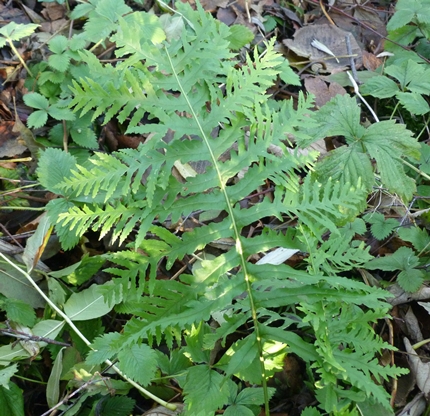
|
Polypodium glycyrrhiza. licorice fern. Hight 30 cm. Spreading habit.
Small spreading Polypod quite hardy with me. The roots are said to taste of licorice if chewed. (There are however a number of lookalike Polypodiums which could be very poisonous, and there is no certainty that P. glycyrrhiza is safe to eat, so the experiment should never be tried.) It is very hardy with me in dry shade, and seems to tolerate chalk soil well. It is not especially beautiful or distinguished as Polypodiums go, but it has produced a first class cultivar called 'Longicaudatum', which has a long finger like pinna on the frond tip giving it a distinct and charming appearance. It is not as invasive as many Polypods, well worth growing.
|
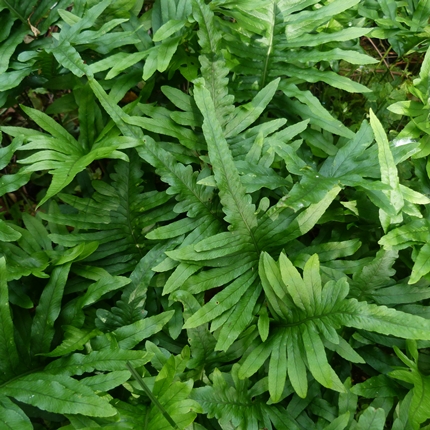
|
P. interjectum (E) intermediate polypody. Hight 40 cm. Spreading habit.
A good, strong-growing native fern, which tolerates a lime soil and dry shade and is perhaps the best British Polypod for general garden use. There are a number of crested and split leaved cultivars which can be obtained, though they are more interesting and collectable than beautiful to my mind. The really good cultivar, ‘Cornubiense’ (Shown) AGM, which shows two different types of frond on the same plant with- out ever completely reverting to any one, probably belongs to this species. ‘Cornubiense’ is infertile, so propagation is by division.
|
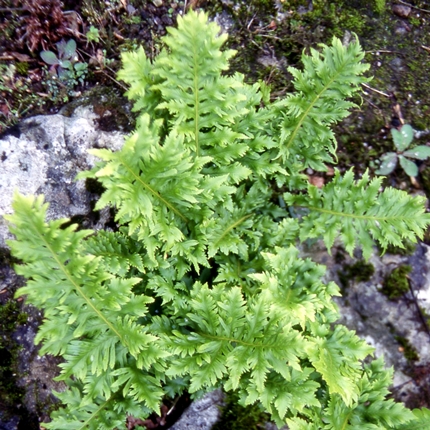
|
Polypodium sculeriae. Leather fern. Hight 40 cm. Spreading habit.
A very attractive Polypodium from North America with, as the name says, stiff shiny leather like fronds, small and only spreading modestly it should make a good garden feature, and is certainly popular with the plant buying public. However it is not to my mind fully hardy in any but the milder areas.
|
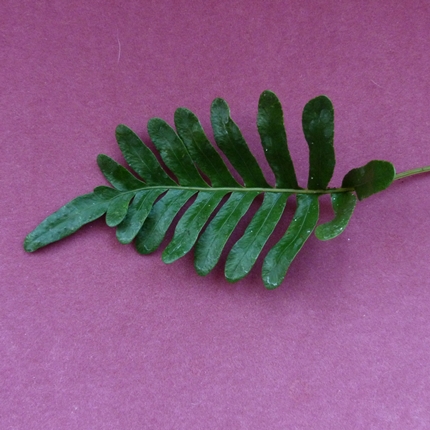
|
P. vulgare (E) common polypody Hight 30 cm. Spreading habit.
Spreading, and easy to grow, though of the three British species this is the only one which does not grow on lime rich soils. with simple pinnate fronds. A really good cultivar is ‘Elegantissimum’, with finely dissected foliage; a pretty little spreading plant, even more attractive than the type. Many polypodiums also have 'Laceratum' and 'semilaceratum' (Shown) types, with frilled edges to the fronds.
|
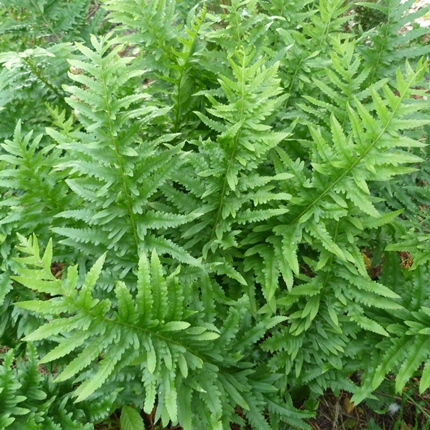
|
|